-
 Bitcoin
Bitcoin $107,341.7259
0.15% -
 Ethereum
Ethereum $2,438.6204
0.70% -
 Tether USDt
Tether USDt $1.0003
-0.02% -
 XRP
XRP $2.1866
1.94% -
 BNB
BNB $649.0952
0.36% -
 Solana
Solana $150.9602
5.63% -
 USDC
USDC $0.9999
0.00% -
 TRON
TRON $0.2742
0.40% -
 Dogecoin
Dogecoin $0.1645
1.93% -
 Cardano
Cardano $0.5669
1.18% -
 Hyperliquid
Hyperliquid $37.8286
4.19% -
 Bitcoin Cash
Bitcoin Cash $491.4669
-2.74% -
 Sui
Sui $2.8150
3.06% -
 Chainlink
Chainlink $13.4184
2.91% -
 UNUS SED LEO
UNUS SED LEO $9.0809
0.27% -
 Avalanche
Avalanche $18.0295
2.60% -
 Stellar
Stellar $0.2396
1.19% -
 Toncoin
Toncoin $2.8587
0.13% -
 Shiba Inu
Shiba Inu $0.0...01160
2.59% -
 Litecoin
Litecoin $86.4192
1.45% -
 Hedera
Hedera $0.1486
1.19% -
 Monero
Monero $308.4324
0.87% -
 Polkadot
Polkadot $3.4202
1.43% -
 Bitget Token
Bitget Token $4.6436
-0.34% -
 Dai
Dai $0.9998
-0.02% -
 Ethena USDe
Ethena USDe $1.0002
0.00% -
 Uniswap
Uniswap $7.1527
3.29% -
 Pi
Pi $0.5357
-8.45% -
 Pepe
Pepe $0.0...09588
4.61% -
 Aave
Aave $259.9759
0.81%
How to view K-line charts at Gate.io? Technical indicator analysis method
Mastering K-line charts and technical indicators on Gate.io is essential for informed crypto trading decisions, enhancing analysis of price movements and trends.
May 09, 2025 at 09:07 am
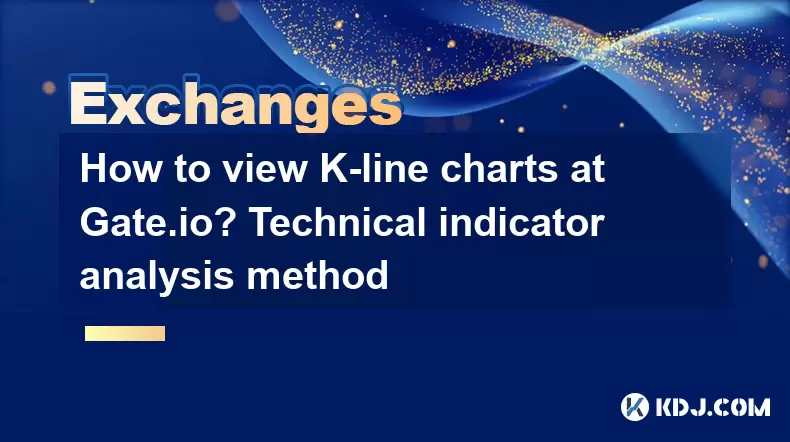
Understanding how to view K-line charts and analyze technical indicators on Gate.io is crucial for any cryptocurrency trader. K-line charts, also known as candlestick charts, provide a visual representation of price movements over a specific period. By mastering the use of these charts and technical indicators, traders can make more informed decisions. This article will guide you through the process of viewing K-line charts on Gate.io and introduce you to various technical indicator analysis methods.
Accessing K-line Charts on Gate.io
To begin, you need to access the K-line charts on Gate.io. Here’s how you can do it:
- Log into your Gate.io account. If you don’t have an account, you will need to create one.
- Navigate to the trading section by clicking on the "Trade" tab at the top of the page.
- Select the cryptocurrency pair you want to analyze from the list provided.
- Click on the chart icon to open the K-line chart for the selected pair.
Once you have the chart open, you can customize it to suit your trading needs.
Customizing the K-line Chart
Gate.io provides several options for customizing your K-line chart. Here’s how you can adjust the settings:
- Choose the time frame for the chart. Common options include 1 minute, 5 minutes, 15 minutes, 1 hour, 4 hours, 1 day, and 1 week. Select the one that aligns with your trading strategy.
- Adjust the chart type. While the default is usually a candlestick chart, you can also switch to a line chart or a bar chart if preferred.
- Add technical indicators. Gate.io allows you to overlay various technical indicators on the chart. To do this, click on the "Indicators" button and select the indicator you want to add.
Understanding K-line Chart Basics
A K-line chart consists of multiple candlesticks, each representing price movements within a specific time frame. Here’s what each candlestick tells you:
- The body of the candlestick shows the opening and closing prices. If the closing price is higher than the opening price, the body is usually green, indicating a bullish period. If the closing price is lower than the opening price, the body is typically red, indicating a bearish period.
- The wicks or shadows of the candlestick represent the highest and lowest prices reached during the time frame. The upper wick shows the highest price, while the lower wick shows the lowest price.
Technical Indicator Analysis Methods
Technical indicators are mathematical calculations based on the price, volume, or open interest of a cryptocurrency. They help traders predict future price movements. Here are some common technical indicators and how to use them on Gate.io:
Moving Averages (MA)
Moving averages smooth out price data to identify trends over time. There are two main types of moving averages:
- Simple Moving Average (SMA): This is calculated by adding up the closing prices over a certain number of periods and then dividing by that number.
- Exponential Moving Average (EMA): This gives more weight to recent prices, making it more responsive to new information.
To add a moving average to your chart on Gate.io:
- Click on the "Indicators" button.
- Select "Moving Average" from the list.
- Choose the type (SMA or EMA) and the period (e.g., 50-day, 200-day).
A common strategy is to use two moving averages of different periods. When the shorter-term moving average crosses above the longer-term moving average, it’s considered a bullish signal. Conversely, when the shorter-term moving average crosses below the longer-term moving average, it’s considered a bearish signal.
Relative Strength Index (RSI)
The RSI is a momentum oscillator that measures the speed and change of price movements. It ranges from 0 to 100 and is typically used to identify overbought or oversold conditions.
To add the RSI to your chart on Gate.io:
- Click on the "Indicators" button.
- Select "RSI" from the list.
- Set the period (usually 14).
An RSI value above 70 suggests that a cryptocurrency may be overbought and due for a price correction. An RSI value below 30 suggests that a cryptocurrency may be oversold and due for a price rebound.
Bollinger Bands
Bollinger Bands consist of a middle band (usually a 20-day SMA) and two outer bands that are standard deviations away from the middle band. They help identify volatility and potential price breakouts.
To add Bollinger Bands to your chart on Gate.io:
- Click on the "Indicators" button.
- Select "Bollinger Bands" from the list.
- Set the period and the number of standard deviations.
When the price touches the upper Bollinger Band, it may indicate that the cryptocurrency is overbought. When the price touches the lower Bollinger Band, it may indicate that the cryptocurrency is oversold. A price breakout outside the bands can signal a strong trend.
MACD (Moving Average Convergence Divergence)
The MACD is a trend-following momentum indicator that shows the relationship between two moving averages of a cryptocurrency’s price.
To add the MACD to your chart on Gate.io:
- Click on the "Indicators" button.
- Select "MACD" from the list.
- Set the fast, slow, and signal line periods (commonly 12, 26, and 9).
The MACD line is calculated by subtracting the 26-period EMA from the 12-period EMA. The signal line is a 9-period EMA of the MACD line. When the MACD line crosses above the signal line, it’s considered a bullish signal. When the MACD line crosses below the signal line, it’s considered a bearish signal.
Combining Technical Indicators
While each technical indicator provides valuable insights, combining them can offer a more comprehensive view of the market. Here’s how you can do this on Gate.io:
- Add multiple indicators to your chart by following the steps mentioned earlier.
- Analyze the signals from each indicator. For example, if the RSI indicates an oversold condition and the MACD shows a bullish crossover, it might be a strong buy signal.
- Consider the overall trend shown by the moving averages. If the price is above both the short-term and long-term moving averages, it suggests a bullish trend.
By combining different indicators, you can increase the reliability of your trading signals and make more informed decisions.
Frequently Asked Questions
Q: Can I save my customized chart settings on Gate.io?
A: Yes, Gate.io allows you to save your customized chart settings. After setting up your chart with the desired indicators and time frames, you can save the layout for future use. Look for the "Save Layout" option in the chart settings menu.
Q: How often should I check my K-line charts and technical indicators?
A: The frequency of checking your K-line charts and technical indicators depends on your trading strategy. Day traders might check their charts multiple times a day, while swing traders might check them less frequently, perhaps once or twice a day. It’s important to find a balance that suits your trading style and schedule.
Q: Are there any other tools on Gate.io that can help with technical analysis?
A: Yes, Gate.io offers several other tools that can aid in technical analysis. These include drawing tools for trend lines and support/resistance levels, as well as the ability to add custom indicators if you have the necessary coding knowledge. You can access these tools from the chart settings menu.
Q: Can I use the same technical indicators for different cryptocurrency pairs?
A: Yes, you can use the same technical indicators for different cryptocurrency pairs. However, it’s important to consider that different cryptocurrencies may have different levels of volatility and market behavior, so the effectiveness of the indicators might vary. Always backtest your strategies on historical data for each cryptocurrency pair you trade.
Disclaimer:info@kdj.com
The information provided is not trading advice. kdj.com does not assume any responsibility for any investments made based on the information provided in this article. Cryptocurrencies are highly volatile and it is highly recommended that you invest with caution after thorough research!
If you believe that the content used on this website infringes your copyright, please contact us immediately (info@kdj.com) and we will delete it promptly.
- BONK Price Prediction: Is the Meme Coin Ready to Pop?
- 2025-06-29 14:30:12
- Bitcoin Funding Rates, Short Squeeze, and the Price Decline: A Perfect Storm?
- 2025-06-29 14:50:12
- Bitcoin Cash (BCH): Explosive Move or False Dawn?
- 2025-06-29 15:10:12
- Chainlink, Lightchain AI, and Presale Hype: What's Real?
- 2025-06-29 15:10:12
- Pi Coin Price Prediction Today: Navigating Uncertainty
- 2025-06-29 14:55:12
- Meme Coins: Buy Now, Hold Forever? (Maybe)
- 2025-06-29 14:30:12
Related knowledge
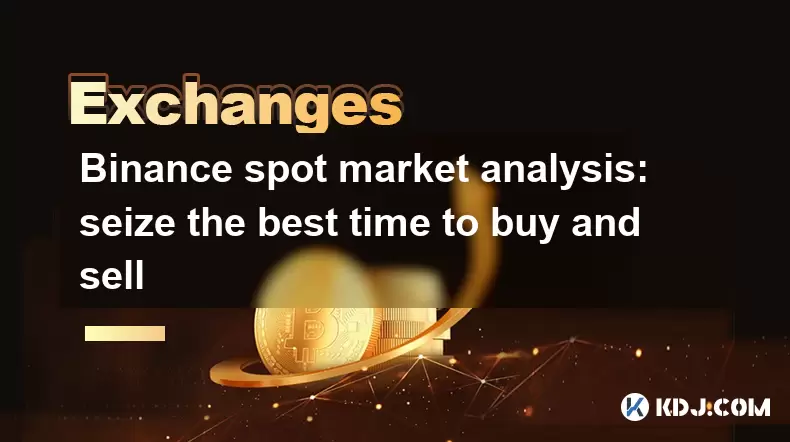
Binance spot market analysis: seize the best time to buy and sell
Jun 19,2025 at 04:56pm
Understanding the Binance Spot MarketThe Binance spot market is one of the most popular platforms for cryptocurrency trading globally. It allows users to trade digital assets at current market prices, making it essential for traders aiming to buy low and sell high. Unlike futures or margin trading, spot trading involves direct ownership of the asset aft...
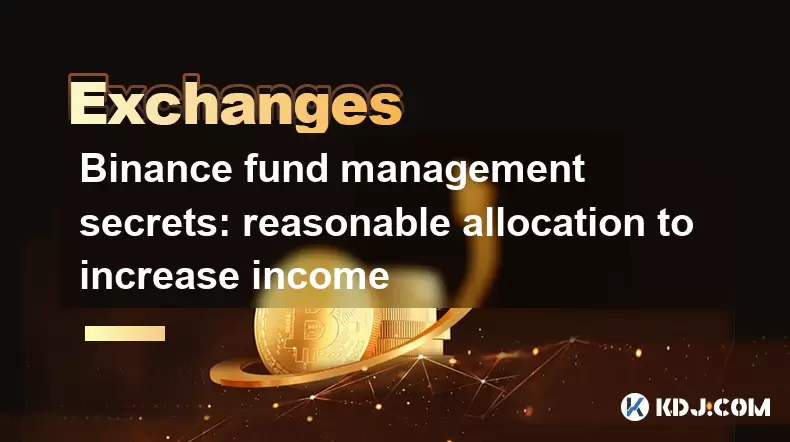
Binance fund management secrets: reasonable allocation to increase income
Jun 22,2025 at 02:29pm
Understanding Binance Fund ManagementBinance fund management involves strategic allocation of your cryptocurrency assets to optimize returns while managing risk. The key to successful fund management lies in understanding how different investment options on the Binance platform can be utilized to create a diversified portfolio. This includes spot tradin...
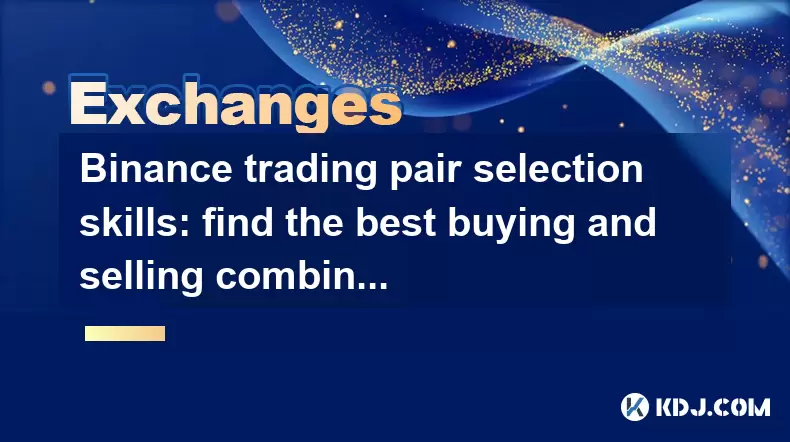
Binance trading pair selection skills: find the best buying and selling combination
Jun 23,2025 at 02:49am
Understanding the Basics of Trading Pairs on BinanceBefore diving into trading pair selection skills, it's essential to understand what a trading pair is. On Binance, a trading pair refers to two cryptocurrencies that can be traded against each other. For example, BTC/USDT means Bitcoin is being traded against Tether. Each trading pair has its own liqui...
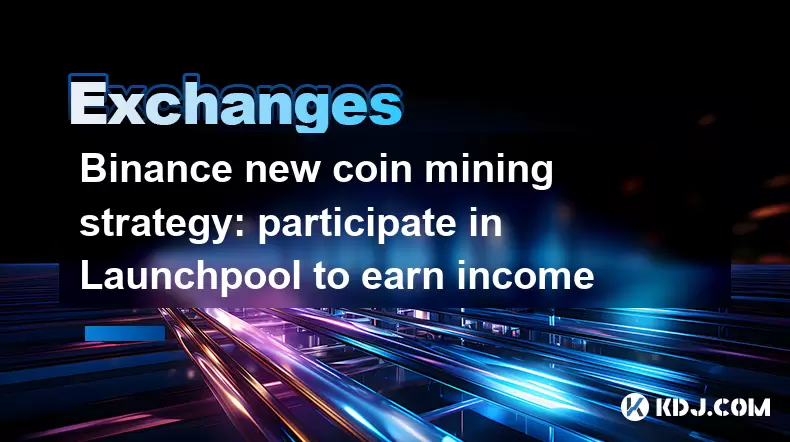
Binance new coin mining strategy: participate in Launchpool to earn income
Jun 23,2025 at 11:56am
What is Binance Launchpool and how does it work?Binance Launchpool is a feature introduced by the world’s largest cryptocurrency exchange, Binance, to allow users to earn new tokens through staking. This platform enables users to stake their existing cryptocurrencies (such as BNB, BUSD, or other supported assets) in exchange for newly launched tokens. T...
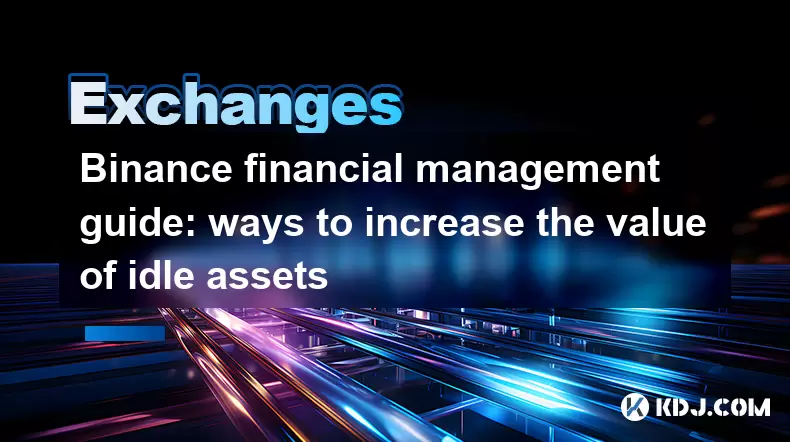
Binance financial management guide: ways to increase the value of idle assets
Jun 19,2025 at 11:22pm
Understanding Idle Assets in the Cryptocurrency SpaceIn the fast-paced world of cryptocurrency, idle assets refer to digital currencies that are not actively being used for trading, staking, or yield farming. Holding these funds in a wallet without utilizing them means missing out on potential growth opportunities. Binance, as one of the leading platfor...
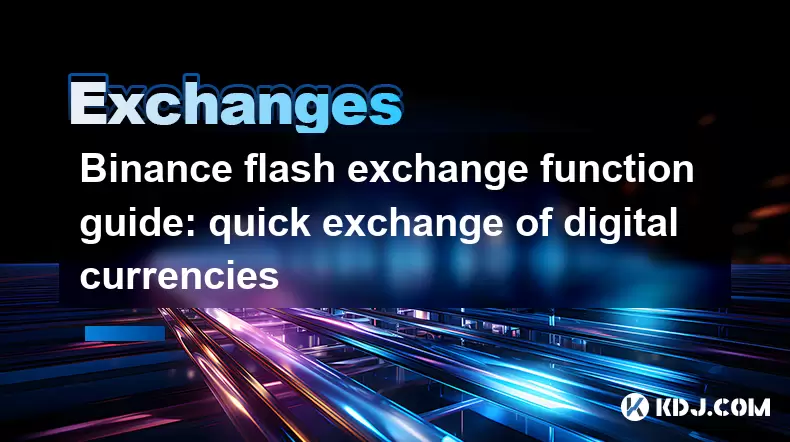
Binance flash exchange function guide: quick exchange of digital currencies
Jun 23,2025 at 12:29pm
What is the Binance Flash Exchange Function?The Binance Flash Exchange function is a powerful tool designed to allow users to instantly swap between supported cryptocurrencies without the need for placing traditional buy/sell orders. This feature simplifies the trading process by offering a direct exchange mechanism, eliminating the requirement to conve...

Binance spot market analysis: seize the best time to buy and sell
Jun 19,2025 at 04:56pm
Understanding the Binance Spot MarketThe Binance spot market is one of the most popular platforms for cryptocurrency trading globally. It allows users to trade digital assets at current market prices, making it essential for traders aiming to buy low and sell high. Unlike futures or margin trading, spot trading involves direct ownership of the asset aft...

Binance fund management secrets: reasonable allocation to increase income
Jun 22,2025 at 02:29pm
Understanding Binance Fund ManagementBinance fund management involves strategic allocation of your cryptocurrency assets to optimize returns while managing risk. The key to successful fund management lies in understanding how different investment options on the Binance platform can be utilized to create a diversified portfolio. This includes spot tradin...

Binance trading pair selection skills: find the best buying and selling combination
Jun 23,2025 at 02:49am
Understanding the Basics of Trading Pairs on BinanceBefore diving into trading pair selection skills, it's essential to understand what a trading pair is. On Binance, a trading pair refers to two cryptocurrencies that can be traded against each other. For example, BTC/USDT means Bitcoin is being traded against Tether. Each trading pair has its own liqui...

Binance new coin mining strategy: participate in Launchpool to earn income
Jun 23,2025 at 11:56am
What is Binance Launchpool and how does it work?Binance Launchpool is a feature introduced by the world’s largest cryptocurrency exchange, Binance, to allow users to earn new tokens through staking. This platform enables users to stake their existing cryptocurrencies (such as BNB, BUSD, or other supported assets) in exchange for newly launched tokens. T...

Binance financial management guide: ways to increase the value of idle assets
Jun 19,2025 at 11:22pm
Understanding Idle Assets in the Cryptocurrency SpaceIn the fast-paced world of cryptocurrency, idle assets refer to digital currencies that are not actively being used for trading, staking, or yield farming. Holding these funds in a wallet without utilizing them means missing out on potential growth opportunities. Binance, as one of the leading platfor...

Binance flash exchange function guide: quick exchange of digital currencies
Jun 23,2025 at 12:29pm
What is the Binance Flash Exchange Function?The Binance Flash Exchange function is a powerful tool designed to allow users to instantly swap between supported cryptocurrencies without the need for placing traditional buy/sell orders. This feature simplifies the trading process by offering a direct exchange mechanism, eliminating the requirement to conve...
See all articles

























































































